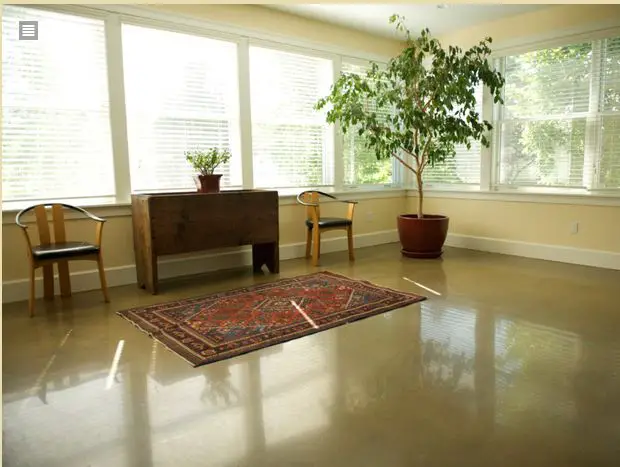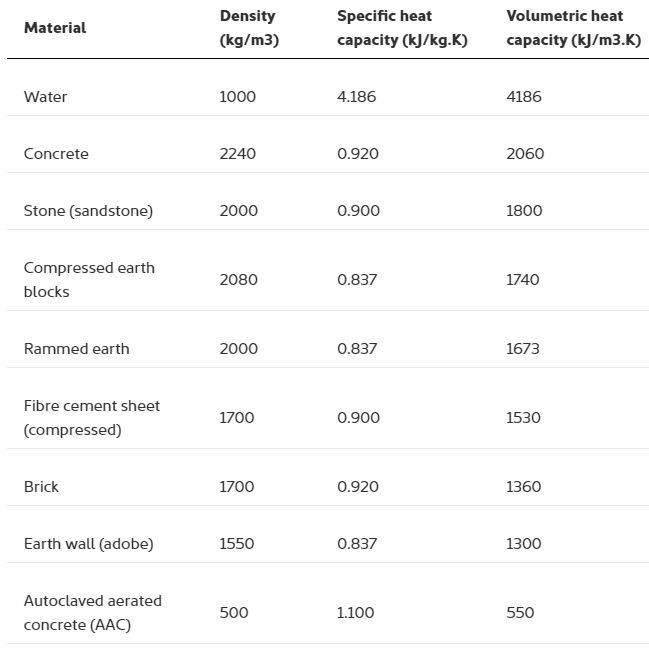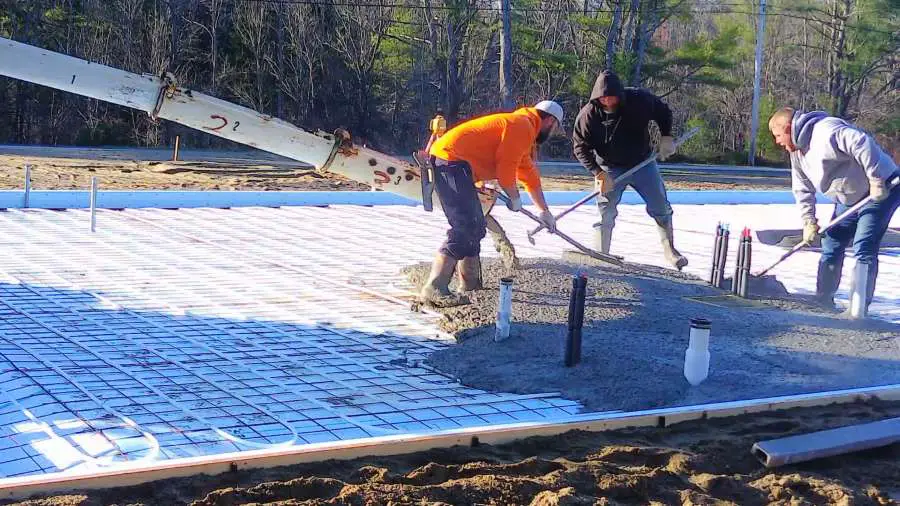The Unbelievable Science Behind How Concrete Absorbs Heat!
Why does concrete absorb heat?
Concrete is what we call a "thermal mass", which means it can absorb and store heat capacity really well.
Concrete is also quite porous, meaning it has small spaces or pores that allow air and other substances to pass through.
When concrete is exposed to heat, like direct sunlight, it absorbs the energy from the heat source and the temperature of the concrete increases.
The degree to which concrete can absorb heat depends on various factors such as its composition, density, color, and moisture content.
One of the primary factors that influence the ability of concrete to absorb heat is its thermal conductivity, which is a measure of how easily heat can flow through a material.
Concrete has a relatively high thermal conductivity, which means that it can absorb and retain heat from its surroundings quite effectively.
When heat is applied to a concrete surface, the molecules inside the concrete start to vibrate and move around, which causes the concrete to heat up.
a POLISHED CONCRETE SLAB WILL ABSORB HEAT IN DIRECT SUNLIGHT
 This polished concrete floor absorbs heat from the sun shining through the windows
This polished concrete floor absorbs heat from the sun shining through the windowsWhen the sun shines on a concrete slab, the concrete can soak up the sun's heat and get really hot. This happens to both interior and exterior concrete slabs, floors, and walls.
When the weather is really hot, the heat from direct sunlight can get absorbed by the concrete slab, creating stored heat.
This "thermal mass of stored heat" will then radiate out through the concrete for quite some time.
does concrete absorb heat from the sun?
Sunlight affects how concrete gets hot in a couple of ways.
When sunlight shines on concrete, it transfers energy in the form of heat to the surface of the concrete.
The amount of heat that is transferred to the concrete depends on a number of factors, such as the intensity of the sunlight, the angle at which it hits the surface of the concrete, and the color of the concrete.

Dark-colored concrete surfaces, for example, absorb more heat from sunlight than lighter-colored surfaces. This is because darker colors absorb more of the visible light spectrum, and the energy from that light is converted into heat, which raises the temperature of the concrete.
In fact, in hot and sunny climates, the surface temperature of dark-colored concrete can reach up to 20-30°C (36-54°F) hotter than the surrounding air temperature.
The duration of sunlight exposure is also an important factor. If the sun shines on the concrete for an extended period of time, the concrete can absorb and retain a lot of heat, which can make it very hot to the touch.
One example of a study that measured the temperature of a concrete slab in direct sunlight was conducted by the National Oceanic and Atmospheric Administration (NOAA) in the United States.
In this study, the researchers found that on a sunny day in Arizona, a concrete surface that was light-colored reached a temperature of around 71°C (160°F) after being exposed to the sun for several hours.
The heat absorbed by the concrete will slowly radiate out into the surrounding air over time, but if the sun continues to shine on the concrete, the process of heat absorption and retention will continue.
How much heat does concrete absorb
The amount of heat that concrete can absorb depends on several factors such as the specific composition of the concrete, its thickness, density, and color, as well as the intensity and duration of the heat source.
In technical terms, the amount of heat that concrete can absorb is often expressed as a material property called specific heat capacity (or simply heat capacity).
Specific heat capacity is the amount of heat energy required to raise the temperature of a unit mass of material by one degree Celsius.
The specific heat capacity of concrete is typically around 0.88 to 1.15 joules per gram per degree Celsius (J/g°C), depending on the specific mix and ingredients used to create the concrete.
This means that for every gram of concrete, it takes between 0.88 and 1.15 joules of heat energy to raise its temperature by one degree Celsius.
To calculate the total amount of heat that a specific volume of concrete can absorb, one needs to multiply the specific heat capacity of the concrete by its mass and the change in temperature.
For example, a 1 cubic meter block of concrete with a density of 2400 kg/m³ and specific heat capacity of 1 J/g°C can absorb around 2.6 million joules of heat energy to increase its temperature by 10°C.
Overall, the exact amount of heat that concrete can absorb will vary depending on the specific conditions and factors involved, but the specific heat capacity can provide a rough estimate of the amount of heat that can be absorbed.
how does the "thermal mass" of concrete compare to other materials
Thermal mass is the ability of a material to store heat. It's also called volumetric heat capacity or VHC.
To calculate VHC, we need to multiply the specific heat capacity by the density of a material.
Specific heat capacity tells us how much energy it takes to raise the temperature of 1 kilogram of a material by 1°C.
Density tells us how much a cubic meter of the material weighs. The higher the VHC, the more heat a material can store.
Water has the highest VHC of any common material. It takes a lot of energy (4186 kilojoules or kJ) to raise the temperature of 1 cubic meter of water by 1°C.
Concrete, on the other hand, requires only 2060kJ to achieve the same temperature change in an equal volume. This means that water can store around twice as much heat as concrete.
Rock usually falls between brick and concrete in terms of VHC, depending on its density. Materials with high VHC also tend to be good at conducting heat, but they are not great insulators.
thermal mass of various materials

10 reasons why concrete absorbs so much heat
Here are 10 reasons that explain "why concrete absorbs so much heat?":
- High Thermal Mass: Concrete is a dense material that has a high thermal mass, which means that it can absorb and store a lot of heat energy.
- Porous Material: Concrete is a porous material, meaning that it has small spaces or pores that allow air and other substances to pass through. This makes it easier for heat to pass through and be absorbed by the material.
- Good Thermal Conductivity: Concrete has good thermal conductivity, which means that it can transfer heat energy from one location to another quickly and efficiently.
- Color: Dark-colored concrete absorbs more light and heat energy than lighter-colored concrete, which makes it capable of absorbing more heat.
- Thickness: Thicker concrete slabs can store more heat energy, and release it over a longer period of time, making them more effective at absorbing and storing heat.
- Moisture Content: Concrete that is damp or has a high moisture content can absorb more heat energy than dry concrete.
- Density: The density of concrete affects how much heat it can absorb, with denser concrete absorbing more heat.
- Direct Sunlight: When exposed to direct sunlight, concrete can absorb a large amount of heat energy, making it feel hot to the touch.
- Environmental Factors: The temperature and humidity of the surrounding environment can affect how much heat concrete can absorb and store.
- Heat Source: The intensity and duration of the heat source can also affect how much heat concrete can absorb, with longer exposure times resulting in greater heat absorption.
Is concrete hotter than asphalt?
In general, dark-colored asphalt surfaces are better at storing heat than light-colored concrete surfaces.
This is because dark colors absorb more visible light, which is then converted into heat energy. So, under the same conditions of sunlight and temperature, asphalt surfaces can absorb more heat than concrete surfaces.
However, it's important to note that there are many factors that can affect the heat absorption of both materials.
For example, the composition of the asphalt and concrete, their thickness, and their moisture content can all influence how much heat they can absorb.
In addition, environmental factors such as air temperature, wind speed, and humidity can also affect the heat absorption of both materials.
Overall, dark-colored asphalt surfaces may absorb more heat than light-colored concrete surfaces under the same conditions.
are radiant heated concrete floors a good source of heat
 Radiant heated concrete slabs and floors absorb heat from hot water traveling through pex tubing.
Radiant heated concrete slabs and floors absorb heat from hot water traveling through pex tubing.Radiant heated concrete floors can be a good source of heat for a home, as they provide a steady, comfortable heat that is distributed evenly throughout a room.
Here are some of the advantages of using radiant heated concrete floors as a source of heat:
- Energy Efficient: Radiant heating systems are typically more energy efficient than traditional heating systems, as they use less energy to achieve the same level of warmth. This can result in lower energy bills and reduced environmental impact.
- Comfortable: Radiant heated concrete floors provide a comfortable and even heat that is free from drafts, hot or cold spots, or the noise and dust associated with forced air heating systems.
- Easy to Control: Radiant heating systems can be controlled using a thermostat, which allows you to adjust the temperature of individual rooms or zones in your home.
- Low Maintenance: Radiant heating systems require very little maintenance, as they have no moving parts and do not require regular cleaning or filter replacements.
- Long-lasting: Concrete floors are known for their durability and longevity, which means that a radiant heating system installed in a concrete floor can provide reliable, long-lasting heat for many years.
There are some drawbacks to using radiant-heated concrete floors, such as the relatively high cost of installation and the fact that they may take longer to heat up than other heating systems.
how hot does concrete get when curing?
Concrete creates heat as it cures through a process called hydration.
When water is added to cement, a chemical reaction occurs in which the cement particles react with the water to form a paste.
This paste then starts to harden and solidify, resulting in the formation of concrete.
As this chemical reaction takes place, it releases heat energy as a byproduct. The heat is generated by the chemical reactions that occur as the cement particles react with the water.
When hydration produces heat it can cause the temperature of the concrete to increase, especially in the early stages of curing.
The heat generated during the curing process can be influenced by a number of factors, including the mix of the concrete, the ambient temperature, the humidity, and the thickness of the concrete.
In some cases, the heat generated by the curing process can be high enough to cause the concrete to crack or become damaged.
This is why it is important to monitor the temperature of concrete as it cures and to take steps to control the rate of heat generation if necessary.
Overall, the process of hydration is what causes concrete to create heat as it cures.
This heat can be beneficial in some cases, as it can help to speed up the curing process and improve the strength and durability of the concrete.
what gets hotter concrete, sand, soil, grass, or wood?
In general, concrete can get hotter than sand, soil, grass, and wood, especially when exposed to direct sunlight.
Compared to sand, soil, and grass, concrete is a denser material that can absorb more heat energy, which can cause it to become hotter.
Sand, soil, and grass are all less dense and have a lower thermal mass than concrete, which means that they absorb and release heat energy more slowly.
Wood is also less dense than concrete and has a lower thermal mass, although its color and density can affect how much heat it absorbs.
This is why a concrete sidewalk or patio that has been in direct sunlight for several hours can feel much hotter to the touch than sand, soil, grass, or wood in the same conditions.
top 7 pros and cons of concrete being able to absorb heat
THE PROS:
- Energy Efficiency: Concrete's ability to absorb and store heat can help reduce the energy needed to heat or cool a building. Using the thermal mass of concrete makes it possible to maintain a more stable temperature, reducing the need for heating and cooling systems.
- Cost Savings: By reducing the need for heating and cooling systems, concrete's heat absorption properties can help save on energy costs over the long term.
- Comfort: Because concrete can absorb and store heat, it can help maintain a more comfortable environment inside buildings. The heat absorbed by the concrete can be slowly released over time, providing a more even and comfortable temperature.
- Durability: Concrete's ability to absorb heat can also help improve its durability. By reducing the temperature fluctuations that can cause materials to expand and contract, concrete can be better protected against damage.
- Sustainability: Using the thermal mass of concrete to regulate temperature can help reduce greenhouse gas emissions by decreasing the need for heating and cooling systems, which are often powered by fossil fuels.
- Reduced Urban Heat Island Effect: In urban areas, the heat absorption properties of concrete can help reduce the urban heat island effect, which can cause temperatures to be several degrees higher than surrounding rural areas.
- Versatility: Concrete's ability to absorb heat makes it a versatile material that can be used in a wide range of applications, from building materials to industrial processes, to create energy-efficient and comfortable environments.
THE CONS OF CONCRETE BEING ABLE TO ABSORB HEAT:
- Risk of Overheating: Concrete's ability to absorb heat can cause it to become hot, which can increase the risk of overheating in buildings, particularly in hot and humid climates.
- Slow Response: Concrete's thermal mass means that it responds slowly to changes in temperature, making it less effective at quickly adjusting to changes in external conditions.
- Poor Insulation: Because concrete is a good conductor of heat, it can be a poor insulator, allowing heat to pass through it and making it less effective at keeping buildings cool in hot weather.
- High Cost: Building with concrete can be more expensive than other materials, particularly when additional insulation is required to prevent overheating or to improve energy efficiency.
- Environmental Impact: The production of concrete can have a significant environmental impact due to the high levels of energy and resources required in its manufacture and transportation.
- Maintenance: Over time, concrete can be subject to cracking, spalling, or other forms of damage, which can reduce its effectiveness at absorbing heat and may require expensive repairs.
Overall, while concrete's ability to absorb heat offers many benefits, it also has some drawbacks that need to be considered.
Is Concrete considered to be one of the better thermal mass materials on the planet?
Yes, concrete is considered to be one of the better high thermal mass materials on the planet due to its ability to store and release heat.
The high density of concrete enables it to absorb heat from the surrounding environment, such as the sun, and release it gradually over time, helping to regulate the temperature in a building or space.
Concrete's thermal mass properties make it a popular material in building design, particularly for passive solar heating and cooling systems.
Additionally, concrete's durability and fire resistance make it a preferred material for construction projects in areas with extreme weather conditions or high fire risk.
DOES A CONCRETE SLAB EXPAND AND CONTRACT WHEN IT'S ABSORBING AND STORING HEAT?
Yes, concrete can expand or contract when it absorbs heat, depending on a variety of factors such as the amount and rate of temperature change, the composition of the concrete, and the degree of restraint or freedom in its movement.
When concrete absorbs heat, it can cause the material to expand due to thermal expansion. Conversely, when concrete cools down, it can cause the material to contract due to thermal contraction.
This can lead to issues such as cracking and distortion if the concrete is not designed or installed with adequate expansion and contraction allowances.
To prevent these issues, expansion joints and control joints are often used in concrete construction to allow for movement without causing damage.
The design and installation of these joints are based on factors such as the expected temperature range, the size and shape of the concrete element, and the location and orientation of the element in relation to other building components.
Here's some more awesome answers to FREQUENTLY ASKED QUESTIONS about concrete.














